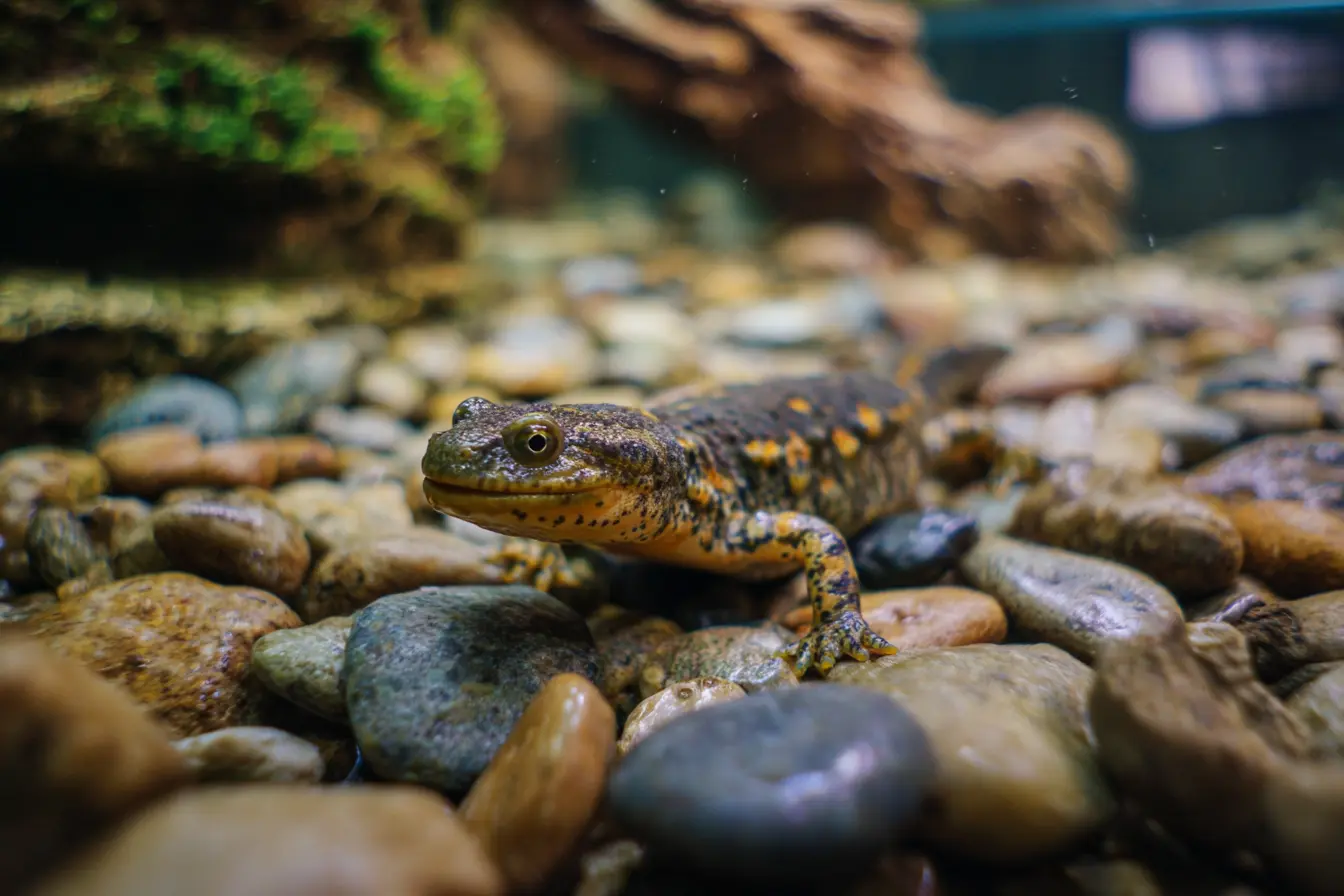
Keeping the Chubby Frog: A Comprehensive Guide
The chubby frog (Kaloula pulchra), also known as the banded bullfrog or Asian painted frog, is a charming and hardy amphibian species popular among beginner and experienced keepers alike. Known for their round, pudgy appearance and distinctive brown and cream banding, chubby frogs are low-maintenance pets that thrive in a simple, well-maintained environment. Native to Southeast Asia, these adaptable frogs have established populations in both wild and urban areas, making them resilient and easy to care for in captivity.
This guide provides an in-depth look at everything you need to know about keeping chubby frogs, from enclosure setup to feeding, behaviour, and health care.
Physical Characteristics
Size
- Adult chubby frogs grow to 7–8 cm (2.7–3.1 inches) in length.
- Females are generally larger than males.
Lifespan
- In captivity, chubby frogs can live for 10–12 years with proper care.
Colouration and Skin Texture
- Characterised by a rounded body with dark brown or greyish skin and two broad, creamy-yellow or orange stripes running from behind the eyes down the sides.
- The skin is smooth but tough, and the body appears inflated—hence the name "chubby frog."
Sexual Dimorphism
- Females are larger and rounder, while males may have a darker throat and are more vocal, especially during the rainy season.
Legal and Ethical Considerations
Chubby frogs are widely available through the pet trade and are not considered threatened. However, it is important to purchase your frog from responsible breeders or ethical pet stores rather than supporting wild-caught trade, especially in areas where invasive populations are an ecological concern.
Always check local regulations, as some regions may have restrictions on keeping non-native amphibians.
Housing and Enclosure Setup
Chubby frogs are terrestrial burrowers that require a warm, humid, and simple setup with easy access to shallow water.
Enclosure Size
- A single adult can be comfortably housed in a 30 litre (8 gallon) terrarium.
- A 60 litre (15 gallon) tank is ideal for a pair or small group, but these frogs are not social and do not require companions.
Substrate
- Use a moisture-retentive substrate suitable for burrowing, such as:
- Coconut fibre
- Organic topsoil (free of fertilisers and pesticides)
- Sphagnum moss mixed into the soil to retain humidity
- The substrate should be 7–10 cm deep to allow natural digging behaviour.
Hides and Decor
- Provide several hiding places using cork bark, half-logs, or caves.
- Chubby frogs appreciate low, sheltered spaces rather than climbing structures.
- A shallow water dish must be provided at all times with clean, dechlorinated water, large enough for the frog to soak in but not too deep to avoid drowning.
Temperature and Humidity
- Temperature: 24–28°C (75–82°F) during the day; a slight drop at night is acceptable.
- Humidity: Maintain humidity between 60–80% by regular misting.
- A gentle heat mat or ceramic heat emitter can be used in cooler environments.
Lighting
- Chubby frogs are nocturnal and do not require UVB lighting.
- Ambient light is sufficient to establish a day-night cycle.
- Optional low-level lighting can be used to view the frog during the evening.
Diet and Feeding
Chubby frogs are voracious eaters and thrive on a diet of live invertebrates.
Suitable Food Items
- Crickets (gut-loaded)
- Earthworms
- Dubia roaches
- Black soldier fly larvae
- Waxworms (as occasional treats due to high fat content)
- Mealworms (sparingly)
- Small locusts
Feeding Schedule
- Juveniles: Feed daily.
- Adults: Feed 2–3 times per week, offering as much as they can eat in 15 minutes.
- Monitor body condition to prevent obesity, a common issue in captivity.
Supplementation
- Dust insects with calcium powder once or twice a week.
- Use a reptile multivitamin supplement once every 2–4 weeks.
Behaviour and Handling
Chubby frogs are best appreciated as display animals rather than pets for regular handling.
Behaviour
- Nocturnal and secretive during the day, they become more active in the evening.
- Famous for inflating themselves when threatened, making them appear larger to predators.
- Docile and generally inactive, spending much of their time hiding or burrowed.
- Vocal during the breeding season, with males producing a loud, low-pitched call.
Handling
- Handling should be avoided except when necessary, as their skin is sensitive.
- Use clean, wet hands or powder-free gloves if handling is required.
- Always wash hands before and after contact.
Health and Common Problems
Chubby frogs are hardy but can suffer from preventable health issues if their environment is not properly managed.
Common Health Issues
- Obesity: Due to overfeeding and lack of activity.
- Dehydration: Caused by low humidity or lack of access to clean water.
- Impaction: Ingestion of substrate, often from feeding on loose soil.
- Skin infections: Resulting from unclean or overly damp conditions.
- Respiratory infections: Usually due to low temperatures and high humidity imbalance.
Preventative Care
- Monitor diet closely to avoid overfeeding.
- Keep the enclosure clean, performing spot-cleaning regularly and full substrate changes monthly.
- Use feeding dishes or tongs to prevent accidental substrate ingestion.
- Maintain optimal humidity and temperature levels.
Breeding Chubby Frogs
Breeding chubby frogs in captivity is possible with proper environmental triggers.
Breeding Triggers
- Simulate a rainy season by increasing humidity and providing a shallow breeding pool.
- Males will begin calling to attract females.
Reproduction
- Females lay large clutches of eggs in shallow water.
- Tadpoles hatch within a few days and require a separate aquatic setup.
Larval Care
- Feed tadpoles on powdered fish food or boiled lettuce.
- Metamorphosis occurs within 30–50 days, after which juveniles must be transferred to a terrestrial enclosure.
Conclusion
The chubby frog is a delightful and easy to care for amphibian species suitable for both beginner and experienced keepers. Their endearing, round appearance, simple care requirements, and low-maintenance enclosure make them a popular choice among amphibian enthusiasts.
With proper diet, a clean, humid environment, and minimal handling, chubby frogs can live long, healthy lives in captivity, offering years of enjoyment through their quirky behaviour and charming looks.
Related Vets
Vets near you
Speciality vets
- Aquatics vet specialists
- Birds vet specialists
- Camelids vet specialists
- Cats vet specialists
- Cattle vet specialists
- Deer vet specialists
- Dogs vet specialists
- Equines vet specialists
- Exotic vet specialists
- Goats vet specialists
- Pigs vet specialists
- Poultry vet specialists
- Sheep vet specialists
- Small Mammals vet specialists
- Wild vet specialists










